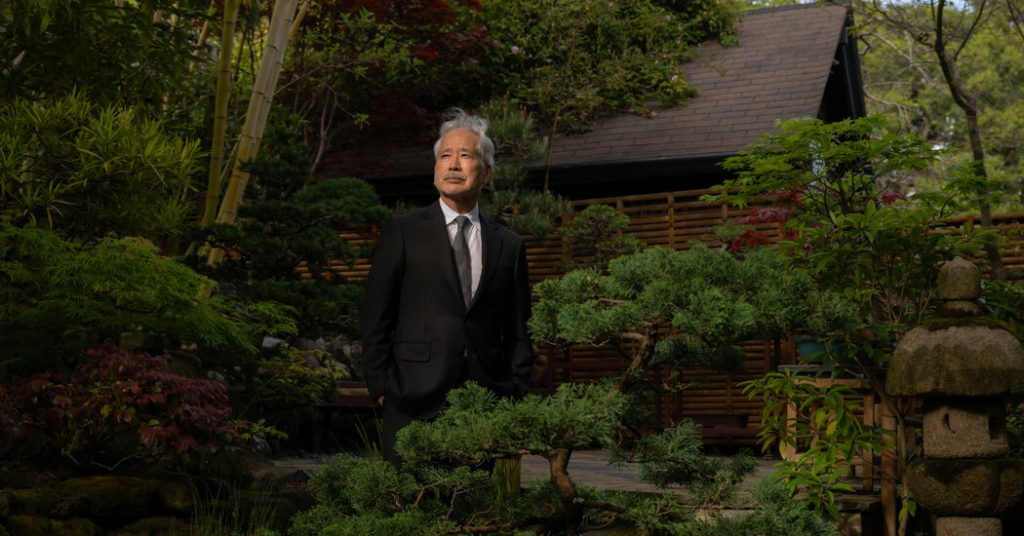When California arrange a reparations job pressure in 2020 to review the generational results of slavery and different racist insurance policies within the state and suggest particular coverage concepts for restitution, it was the primary such statewide effort within the nation.
The nine-member workforce included lawmakers, students, neighborhood leaders and attorneys. Eight of the 9 members have been Black. The ninth was Donald Ok. Tamaki, a Japanese American lawyer with precious expertise to share.
In the Nineteen Eighties, Tamaki labored professional bono on the authorized workforce that reopened the landmark 1944 Supreme Court case Korematsu v. United States. The court docket’s choice in that case had been used to justify the federal authorities’s pressured relocation and internment of greater than 120,000 Japanese Americans and other people of Japanese descent throughout World War II.
Tamaki and his colleagues persuaded a federal court docket in 1983 to overturn Fred Korematsu’s conviction for refusing to adjust to the internment order, paving the best way for Japanese Americans in 1988 to acquire redress, which included $20,000 for every survivor and an official apology from President Ronald Reagan. It stays one of many few examples within the U.S. of a profitable reparations effort.
The Japanese American redress motion has taken on a contemporary relevance as state lawmakers — performing on steering from the reparations job pressure — take into account a Black reparations legislative package deal.
Last month, I visited Tamaki at his dwelling in Piedmont, hoping to listen to extra in regards to the insights that he had shared with the duty pressure. But over the course of our 90-minute dialog, it turned clear to me that Tamaki had realized simply as a lot from serving on the duty pressure as he had contributed.
“I thought I knew something about American history,” Tamaki mentioned over peanut butter cookies and low. “But I realized after taking a deep dive into this that I really didn’t know a whole lot.”
Tamaki left the sunroom the place we have been sitting and got here again a couple of minutes later with a hardback copy of the duty pressure’s doorstop report. It reveals how Black individuals have been enslaved in California although it had joined the union as a free state. And it particulars how discriminatory housing, voting and legal justice insurance policies have hampered the flexibility of Black Californians to build up wealth for generations.
Tamaki mentioned that engaged on the report had reworked his view of race and racism in America. For years, he mentioned, he would begin his talks on Japanese American incarceration by referring to the alien land legal guidelines of the late nineteenth and early twentieth centuries, when Asian immigrants have been banned from shopping for or leasing agricultural property. Or he would discuss in regards to the Chinese Exclusion Act of 1882, which successfully banned immigration from China.
But today, Tamaki mentioned, he begins his lectures by reaching a lot farther again into historical past, to 1619 — when a ship carrying greater than 20 enslaved Africans arrived within the English colony of Virginia.
“I now see these things that happened to us in our community as essentially a subchapter in a racial pathology that began long before we arrived on these shores,” Tamaki mentioned. “And that origin is not 1882 — it’s 1619.”
Decades in the past, his dad and mom had come to an analogous conclusion, Tamaki mentioned.
In 1942, 8,000 Japanese Americans from the Bay Area, together with Tamaki’s dad and mom and his prolonged household, have been rounded up and despatched to short-term detention amenities at Tanforan Racetrack, now a shopping mall in San Bruno.
One of the primary issues his dad and mom observed after arriving on the racetrack have been the indicators studying “white” and “colored” hanging above the segregated bogs and ingesting fountains, he mentioned.
“They didn’t miss the irony that basically what began as anti-Black sentiment and animus, that whole construct — it just shifted to include this population,” he mentioned.
And earlier than you go, some excellent news
Known as 4/20, the annual April 20 pot occasion has been celebrated for many years throughout the nation. But the place did it come from?
The reply: a gaggle of youngsters at San Rafael High School in Marin County.
In the early Seventies, the group, who known as themselves the Waldos, would meet at 4:20 p.m. to smoke marijuana and scour the Point Reyes National Seashore for marijuana that had been surreptitiously planted there, based on the History Channel. Soon “420” turned their shorthand for weed, and the time period took off.
Thanks for studying. We’ll be again on Monday.
P.S. Here’s immediately’s Mini Crossword.
Soumya Karlamangla, Maia Coleman and Briana Scalia contributed to California Today. You can attain the workforce at CAtoday@nytimes.com.
Sign up right here to get this article in your inbox.


